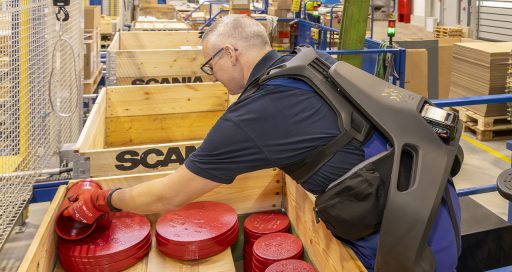An innovative way to include SMEs in the industry of the future
Reading time: 3 min
Factory 4.0 is not just for large companies. A California-based start-up has launched a combined hardware and software product to automate assembly lines with very small production runs.
![]()
A San Francisco start-up, Bright Machines, has launched a product that may speed up the rollout of Industry 4.0. Its designers say the combined hardware and software solution, called “Software Defined Microfactory”, will support progress in automating automation systems – in other words, enable factories to autonomously become programmable.
Bright Machines has focused on what is often the factory’s least automated part, the assembly line. The product comprises software – called Brightware – located in the cloud, and hardware – Bright Robotic Cells – that factory employees will be able to put together like Lego pieces to create automated assembly lines.
Bright Machines CEO Amar Hanspal says this combination makes it possible to automate manufacturing segments with very small production runs, which are seldom automated due to the cost or factory size.
“Factory 4.0 also covers SMEs and customers who do not have access to the technology or have not considered automating some of the tasks carried out by machines.”
This is an interesting aspect of the solution says Thomas Leseigneur, innovation manager at Actemium, the VINCI Energies brand dedicated to industrial performance. “Factory 4.0 is not just for large industries. It also covers SMEs and customers who do not have access to the technology and have not considered automating some of the tasks carried out by machines.”
“Facilitating production line integration”
Actemium has been keeping a close eye on innovations such as Software Defined Microfactory because anything involving the industrialisation of the means of production “can enable industries to facilitate the integration of production lines.”
But Mr. Leseigneur says that for the time being the Bright Machines solution applies to small assembly work and is a good choice for machines handling repetitive tasks. We are still a long way from rolling out a solution of this type across a complete factory with continuous processes.
The Actemium innovation manager also has misgivings about the solution’s “unpack, plug and play” promise. “Some adjustments will have to be made at the site during commissioning, and that will require the involvement of a commissioning expert.”
He believes that one of the benefits of the Bright Machines approach is “the generation of automatic code, in other words automatic generation of PLC programmes.” And, he adds, “Products of this type, which operate under certain conditions or on certain types of machines, are becoming commercially available. They require rigorous structuring of design data.”
Progress made by the California start-up is expected to inspire companies that deliver automation (“special machines”), such as Actemium. In response to customer demand, they design the machine to make a part. “It would be very advantageous for them to be able to automate the programming of these machines.” In a sense, to automate automation.
12/12/2019




